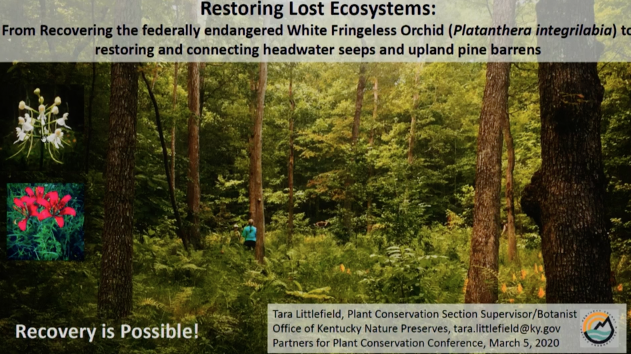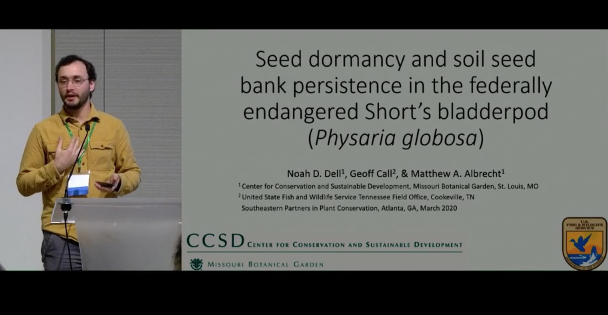
Jeremy Frencha and Brittney Viers, Quail Forever/Southeastern Grasslands Initiative The southeastern region of the U.S. was one of the most diverse grassland regions of North America, yet more than 99% has been lost due to such factors as conversion to row crop agriculture, forest succession, and wetland drainage. Reversing the decline in grassland biodiversity will […]
Read More…

Tara Littlefield, Senior Botanist/Plant Conservation Section Manager, Office of Kentucky Nature Preserves It all started with a monitoring study of a declining White fringeless orchid (Platanthera integrilabia) population in 2007 at a State Nature Preserve in the Cumberland Plateau of Kentucky. This talk will outline this long term monitoring study of the white fringeless orchids […]
Read More…

Noah Dell, Missouri Botanical Garden, Geoff Call, United States Fish and Wildlife Service, Matthew A. Albrecht, Missouri Botanical Garden Short’s bladderpod (Physaria globosa) was recently listed as federally endangered due to population decline across its range in Tennessee and Kentucky. However, little is known about the biology of the species and the potential mechanisms underlying […]
Read More…

Anna Lucio, Kentucky Department of Agriculture The annual American ginseng (Panax quinquefolius) (ginseng) harvest is rooted with deep cultural and economic value in communities not often touched with conventional agriculture programs. Authorized under Kentucky statute and regulation, the Kentucky Department of Agriculture administrates the ginseng program for Kentucky. The requirements for this program come from […]
Read More…



